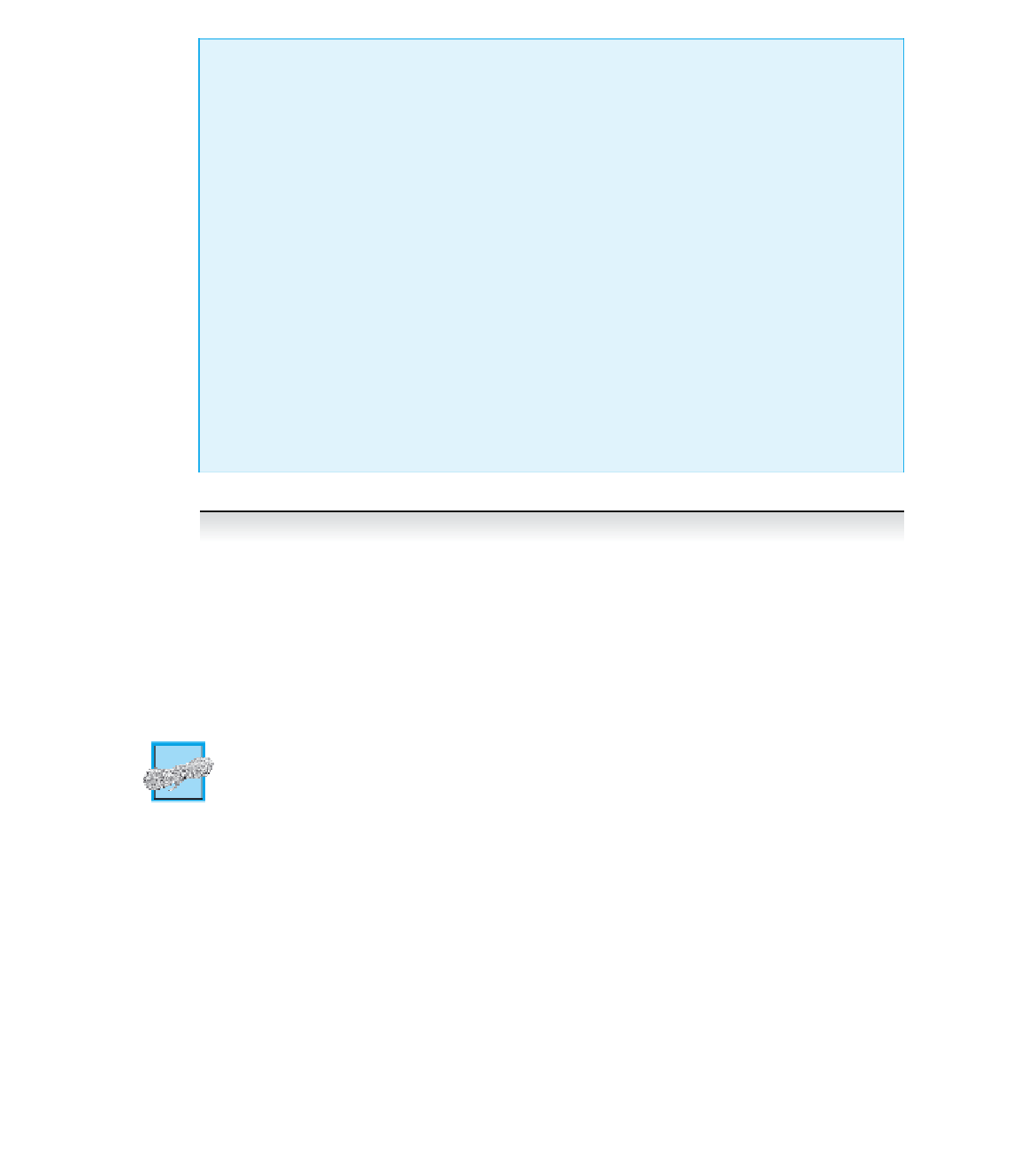Java Reference
In-Depth Information
Interfaces
An interface is a type that specifies method headings (and, as we will see, possibly defined
constants as well). The syntax for defining an interface is similar to the syntax of defining a
class, except that the word
and only the method head-
ings without any method body (but followed by a semicolon) are given.
Note that an interface has no instance variables and no method definitions.
A class can implement any number of interfaces. To implement an interface the class must
include
interface
is used in place of
class
implements
Interface_Name
at the end of the class heading and must supply definitions for the method headings
given in the interface. If the class does not supply definitions for all the method headings
given in the interface, then the class must be an abstract class and the method headings
without definitions must be abstract methods.
EXAMPLE
See Displays 13.1, 13.2, and 13.3.
Self-Test Exercises
1. Can you have a variable of an interface type? Can you have a parameter of an
interface type?
2. Can an abstract class ever implement an interface?
3. Can a derived class have two base classes? Can it implement two interfaces?
4. Can an interface implement another interface?
PITFALL:
Interface Semantics Are Not Enforced
As far as the Java compiler is concerned, an interface has syntax but no semantics. For exam-
ple, the definition of the
Ordered
interface (Display 13.1) says the following in a comment:
/**
For objects of the class o1 and o2,
o1.follows(o2) == o2.preceded(o1).
*/
You might have assumed that this is true even if there were no comment in the interface.
After all, in the real world, if I precede you, then you follow me. However, that is giving
your intuitive interpretation to the word “
precedes
.”
(continued)




















